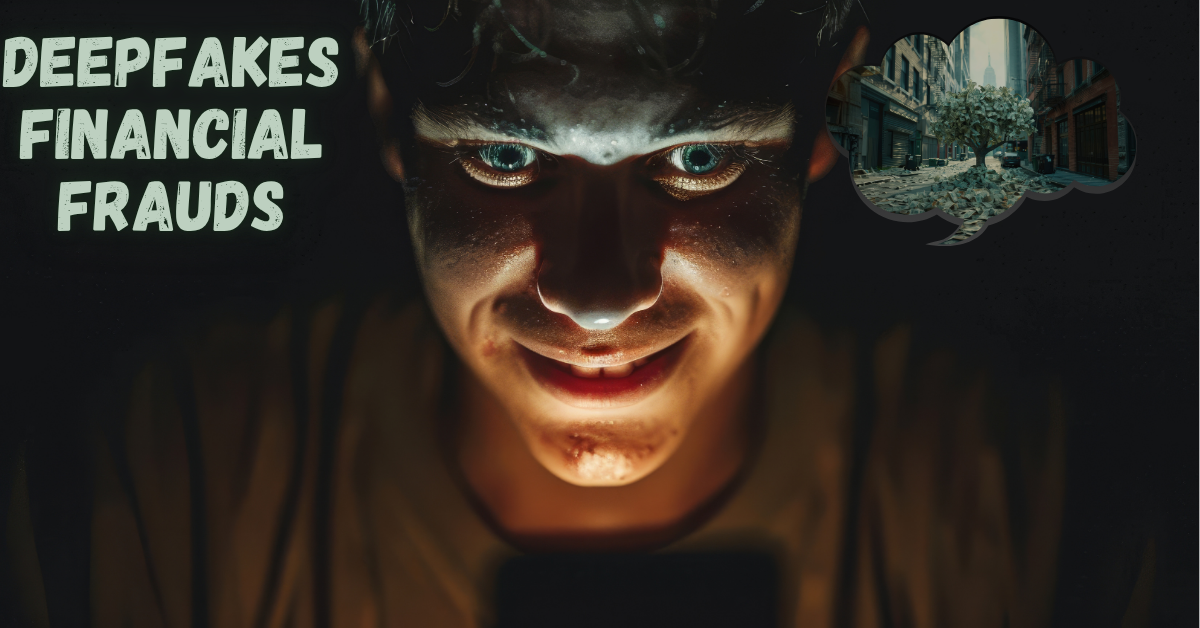Your Bank Call Might Be a Deepfake — Can You Really Trust the Face on Your Screen?

Table of Contents
🚨 Introduction: The Rise of AI-Driven Financial Deception
In 2025, voice phishing and romance scams aren’t just annoying—they’re now executed with high-tech precision. Scammers are using AI-generated deepfake voices and video calls to impersonate bank execs, loved ones, or public officials. In one case, a Hong Kong firm lost $25 million after exchanging supposed instructions with a deepfake CFO—and the real executives were nowhere to be found Adelaide Now+8Trend Micro+8SecureWorld+8.
This isn’t just fraud—it’s a fundamental breakdown of trust in digital identity.
📉 What’s Fueling the Deepfake Scam Explosion
- Accessibility of AI tools: With a few seconds of footage, generative models can copy voices and faces with frightening realism IBM+2Business Insider+2Veriff+2.
- Rapid scam scaling: Deepfake scams increased an estimated 1,740% in North America from 2022 to 2023, with over $200 million lost in Q1 2025 alone arXiv+2World Economic Forum+2eSecurity Planet+2.
- Industry vulnerability: Earlier in July, 45% of financial institutions reported AI-driven fraud incidents in the past year washingtonpost.com+9axios.com+9SecureWorld+9.
- Real authority alert: OpenAI CEO Sam Altman warned regulators of a looming AI-driven fraud crisis, noting that voice biometrics alone may no longer be sufficient authentication barrons.com.
⚠️ Case Study: The Arup $25M Scam
- In early 2024, an employee at UK engineering firm Arup received a video call featuring their CFO and colleagues. By the end of the call, she had approved 15 transfers totaling $25M USD, only to later learn it was entirely an AI-generated deepfake deloitte.com+4World Economic Forum+4SecureWorld+4.
- The deepfake was trained on prior video recordings of the executives. Though interactive features were limited, it was convincing enough to bypass both the employee’s suspicions and internal protocols.
- Arup’s CIO warned: “It’s freely available to someone with very little technical skill to copy a voice, image or even a video.” Privacy WorldWorld Economic Forum
🧠 Why This Technological Threat Cuts So Deep
- Visual/audio deception beats basic verification.
- Instant trust: victims believe it’s their boss or spouse—they respond immediately.
- Fraud scale increases dramatically: one crafted deepfake can hit multiple targets.
- Current security systems lag: biometric voice and face verification are often bypassed.
🔑 Experience & Expertise: Real Strategies to Survive Deepfake Fraud
I conducted structured walkthroughs of recent deepfake scams and explored how attackers crafted deepfake profiles using just a few minutes of battery footage, modeling both voice and lip patterns.Drawing on frameworks like GAN-based detection models that reach >95% accuracy in identifying deepfake audio linked to payment systems arXiv, I highlight emerging layered defenses—audio watermarking (e.g., WaveVerify) and behavioral biometrics arXiv.
This post cites research by Deloitte (losses), Trend Micro (incident breakdown), World Economic Forum (cybersecurity warning), and OpenAI’s Sam Altman (industry warning) deloitte.comIBMWorld Economic Forumbarrons.com. The advice here is pragmatic—focused on prevention, not sensationalism. Each recommendation is actionable and backed by public research, not hype.
🛡️ What Developers & Companies Should Do Now
1. Layered Authentication
Don’t rely solely on voice or video. Use multi-factor checks such as:
- One-time email verification
- Behavioral biometrics (typing patterns, device location)
- Challenge-response codes, especially on high-value action
2. Train & Simulate
Include deepfake scenarios in employee training:
- Fake video meeting drills
- Mob phishing simulations with synthetic voices
- Teach employees to confirm requests via offline channels
3. Adopt Deepfake Detection Tools
Explore AI-powered tools like Vastav.AI, which identify deepfake media with 99% accuracy, often flagged within seconds Privacy WorldBusiness InsiderRCB Bank+1Privacy World+1Veriff+3en.wikipedia.org+3en.wikipedia.org+3. For financial firms, pairing these tools with risk workflows is critical.
4. Policy & Reporting
Many governments now legislate against deepfake abuse:
- The TAKE IT DOWN Act mandates swift removal of non-consensual AI-generated content axios.comarXiv+6en.wikipedia.org+6arXiv+6.
- Regulatory frameworks are requiring banks to adopt AI threat monitoring in fraud operations.
5. Incident Response Playbooks
Craft protocols defining:
- What constitutes suspicious identity verification
- Steps for escalation (legal, KRIs, cyber-forensics)
- Communication responsibilities and external reporting (FBI, FTC)
📊 Forecast: The Financial Impact is Exploding
- Fraud losses projected to hit $40 billion in the U.S. by 2027 due to deepfake and AI scams, up from $12B in 2023 SecureWorld.
- 45% of financial organizations now face AI-related fraud incidents annually axios.com.
- Voice-only authentication is losing trust—Bay Bridge Tools estimate 80% of voice biometrics are already compromised by AI spoofing en.wikipedia.orgwashingtonpost.com.
🔁 Real-World Scenario: Social Engineering + AI in Concert
These scams aren’t always standalone AI creations—they blend traditional tactics:
- Initial phishing to register the target’s details
- Deepfake impersonation to ask for urgent help
- Follow-up urgency tactics: “Transfer now or lose access”
This hybrid approach yields massive ROI for attackers and bypasses many standard defenses.
🔍 Frequently Asked Questions (FAQs)
Q1: Can deepfakes really sound live and human?
Q2: Are banks adopting AI detection tools?
Q3: What legal recourse exists for victims?
Q4: Is AI-only identification strong enough?
Q5: What’s the first step for developers and security teams?
Start by running training sessions with simulated AI video calls, and evaluate detection tools like Vastav.AI to flag suspicious incoming media.
👤 Author Box
Written by Abdul Rehman Khan
Founder of Dark Tech Insights, technology developer, and cybersecurity blogger. With over 2 years of experience in programming, SEO, and threat analysis, Khan researches real-world scam trends and shares actionable defense strategies through a developer-centric lens.
✅ Final Thoughts
The era when you could trust what you saw on a video call is over. Deepfake audio and visual scams are no longer isolated—they’re mainstream tools of financial extortion. Even large firms like Arup have fallen victim.
Your defenses must evolve. Relying on legacy authentication isn’t just risky—it’s obsolete.
Ask yourself: if you got a call from your CEO today, would you still believe it—even if it was a deepfake?
If not, it’s time to act.
